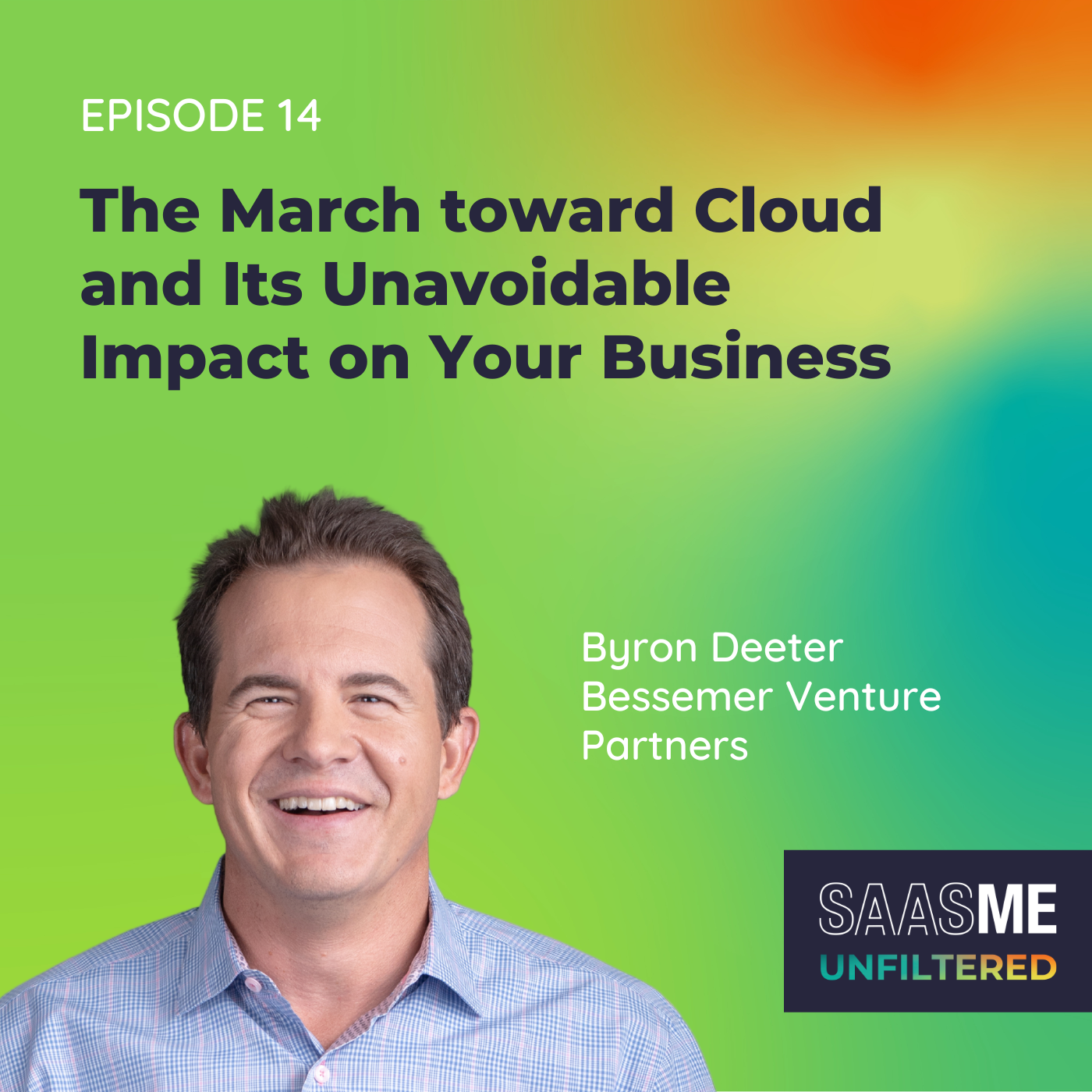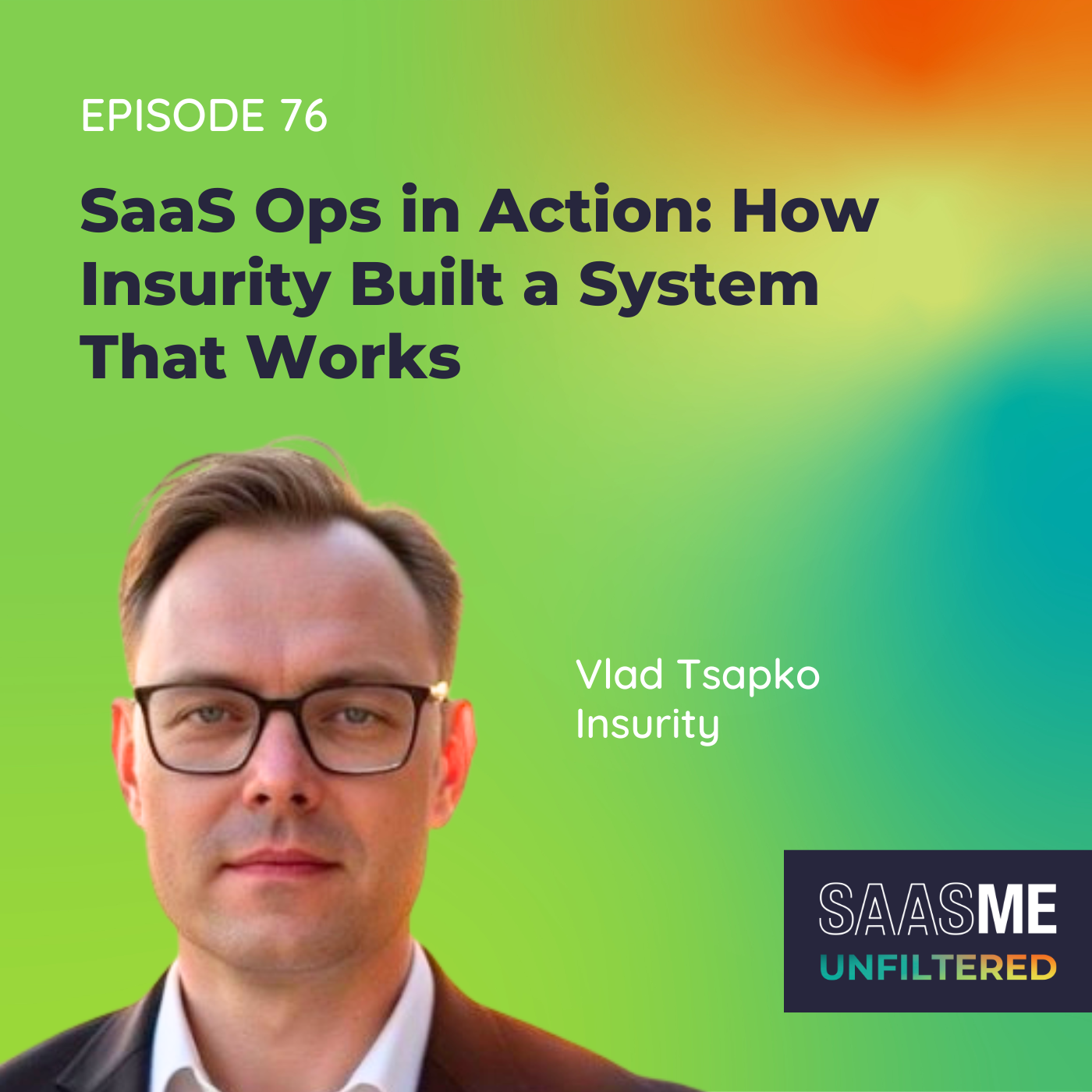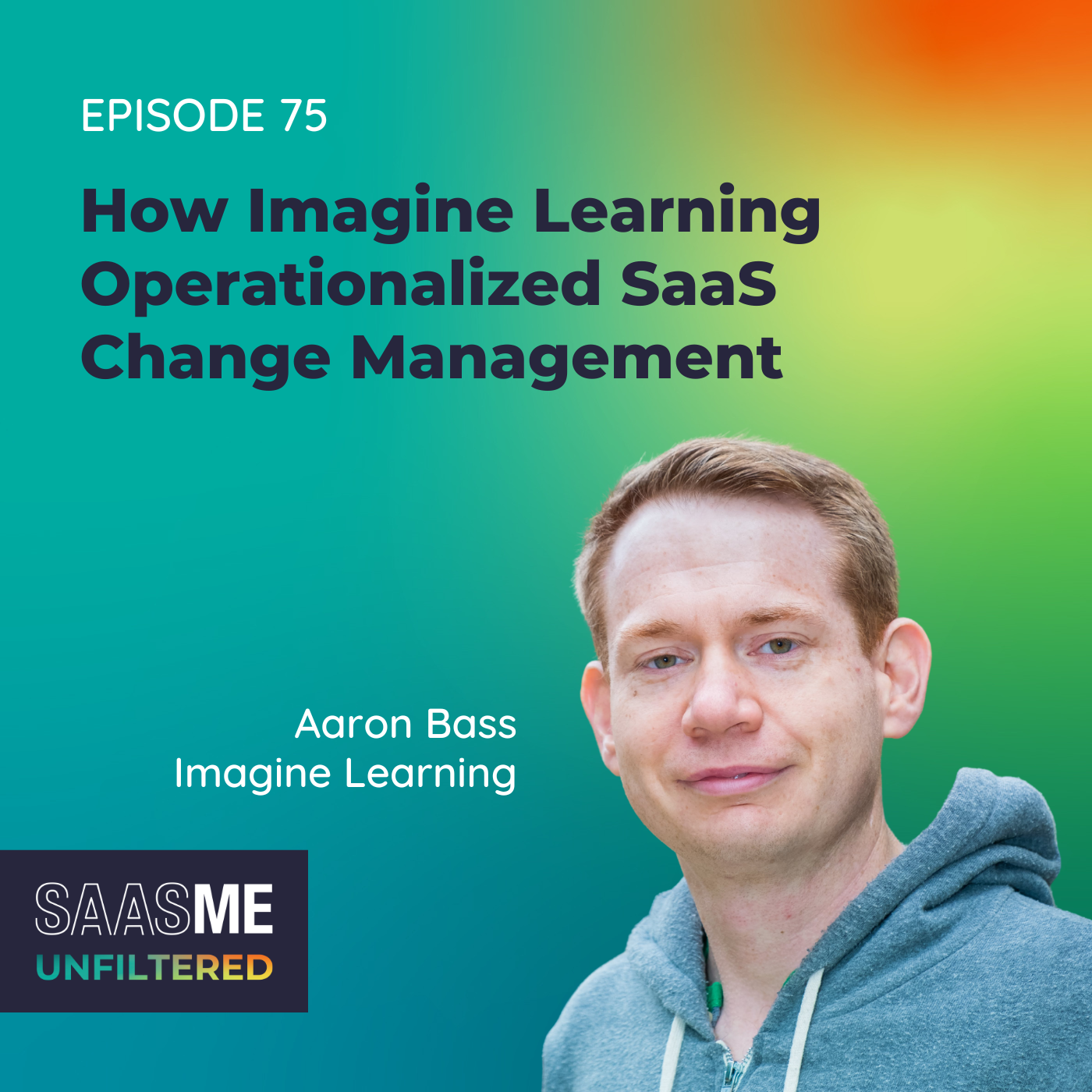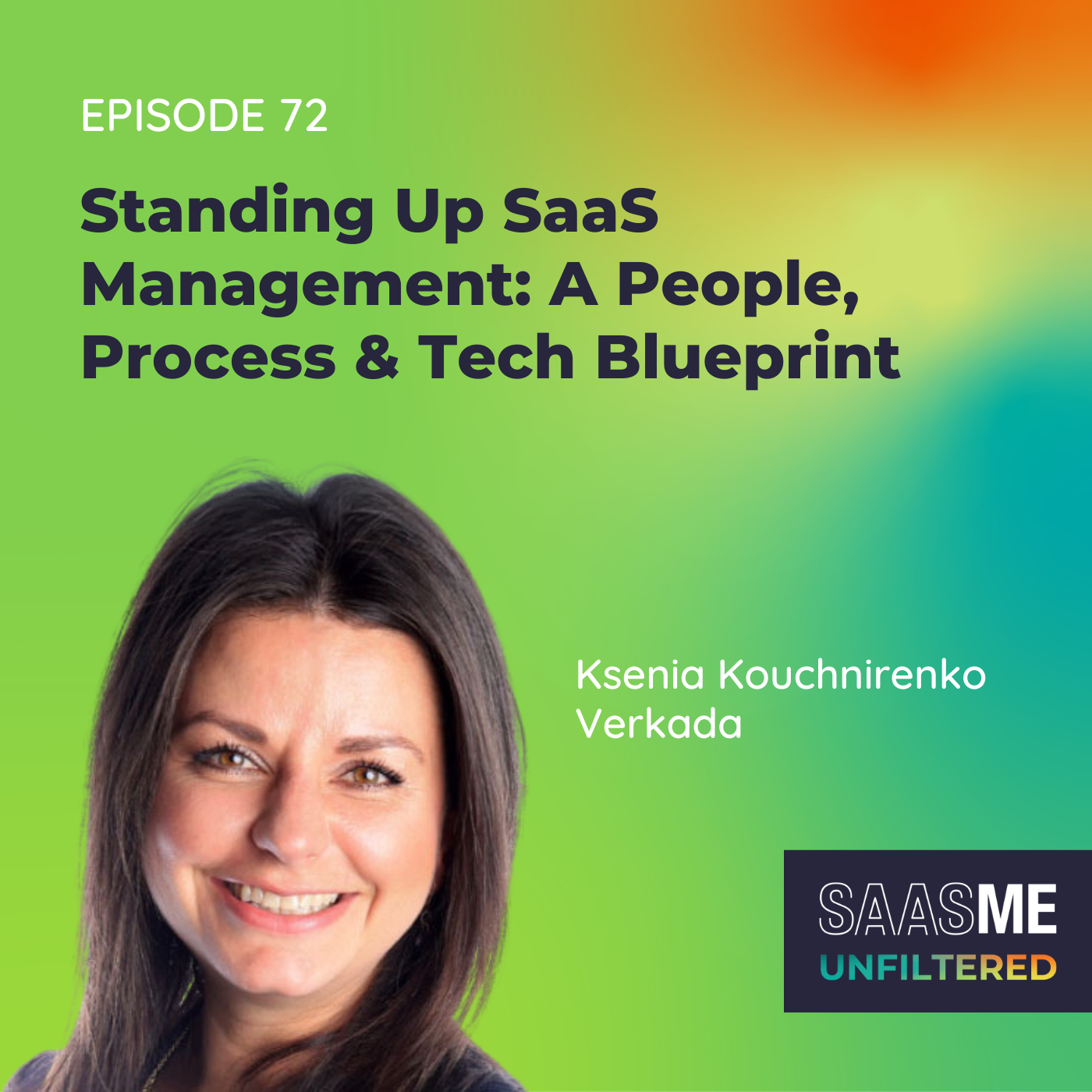Byron Deeter: The March toward Cloud and Its Unavoidable Impact on Your Business
- 0.5
- 1
- 1.25
- 1.5
- 1.75
- 2
Byron Deeter: They're thinking about business optimization. Okay, what are the things that I can do to actually make our team collaborate better? And they're thinking strategically about how can we run our business better? And so all of these things layer into what we believe are enablers for the distributed software model and this application layer that's both browser and mobile accessed and just further pushes forward this march towards cloud adoption. And of course, there will be some categories that remain. There's a role for embedded software. There's government and military deployments where they will be entirely cut off from connectivity for all sorts of obvious reasons. But we think, for the vast majority of software in the world, that march is happening, it's happening faster and it's inevitable.
Cory Wheeler: Hello, hello and welcome to SaasMe Unfiltered: the SaaS Management Podcast, the show with give- it- to- you- straight, real- life advice from pros knee deep in SaaS every single day, SaaS management superheroes just like you. Really excited to have you join us. I'm Cory Wheeler, co- founder and Chief Customer Officer here at Zylo.
Ashley Hickman: And I'm Ashley Hickman, Manager of Customer Success at Zylo.
Cory Wheeler: Well, we have a bit of a legend in the cloud space joining us today. He is a leading investor in cloud and in the internet. He's a co- author of Bessemer's Annual State of the Cloud Report. He created the Bessemer Forbes Cloud 100 and BVP NASDAQ Emerging Cloud Index, and works closely with many of the best founders in the cloud world. To date, 19 of his investments are valued above$ 1 billion, including 10 IPOs and counting. He graduated with honors from the University of Cal Berkeley. He's a four- time rugby collegiate national champion, and Ironman finisher, the father of three children, one of which he recently took a global sabbatical with his son, which I'd love to hear about that in a little bit. He's also the host of Bessemer's newest podcast Cloud Giants. And last but not least, he's an investor in Zylo and one of our board members. So everyone, please welcome Byron Deeter to the SaasMe Unfiltered Podcast. Welcome, Byron.
Byron Deeter: Thank you. Wonderful to be with you, Cory and Ashley. Thank you for the time and the energy here. I'm excited.
Cory Wheeler: We're excited as well. I think this is a really timely opportunity for us to have you on the podcast. Ashley and I are super excited to dig in and learn more, bring some of your knowledge to the forefront for our listeners, and ask some very topical questions around SaaS, the industry and where things are headed. So we will go ahead and dive right in.
Byron Deeter: Game on.
Ashley Hickman: Awesome. Typically, we're speaking with people in the trenches, learning about and hearing about their SaaS management advice, their tips, their tricks, their lessons learned, really kind of looking at that at a more granular level. So this is an opportunity for us, as well as our listeners, today to take that up a level, kind of look at the state of tech, and of course SaaS companies, at a much higher level and really getting your take on current state as well as future state moving forward. So as Cory mentioned in the introduction, each year, Bessemer covers really the top trends and insights on the global cloud economy in your State of the Cloud Report, so how is the model getting better, where is it changing? This year, it's really highlighting this being the year of the centaur. So we'll kind of get into that a little bit, but really want to dig into some of those trends, insights, how you see that shifting and changing, as Cory mentioned in the interaction. So really want to dive into that, really to start to dig into those insights. Sound good?
Byron Deeter: Excellent. Well, I love that you teased this centaur concept. We'll keep the audience in suspense, but there's a lot of meat this year to talk about, and I want to give a particular thanks to all of my partners, in the sense that this is a team effort. All the partners in the firm are involved in this. And in particular, Elliott Robinson, Sameer Dholakia, and Mary D'Onofrio, who led the charge for the report this year and did most of the heavy lifting and thinking. But this really does reflect the best practices across our entire portfolio and the learnings from the group. And it's pretty fun to synthesize that and look back on just how far this industry's come.
Ashley Hickman: Yeah. So speaking about that, looking back and as well as looking forward, so since your time in this space, how have SaaS companies, how have they really shifted their approach? How are they building more powerful, kind of like where they've started, where you see companies starting today and that changing over time, really that power, that impact, how have you seen that evolution and transition take place?
Byron Deeter: Yeah, so I would think about it over a couple of phases. Really, gen one was the this of that phase, it was the PeopleSoft for cloud became Workday, or even before that it was the Siebel for cloud became Salesforce, and it was really just taking known product categories, moving them online. The second phase was a lot of net new things that weren't possible pre- internet and pre- connectivity. LinkedIn's a fun example from our portfolio, or Shopify, where until you had internet penetration, you couldn't have an online network. Obviously, then you couldn't have the talent products, in LinkedIn's case, or the e- commerce products and mobile storefronts and the like from the Shopify case. And so you have this sort of next horizon of mind- bending fun of what could be possible now that you have connectivity and cloud capabilities. And now we're seeing another horizon of this where really you're deconstructing layers of cloud, you're opening up APIs, and then most exciting recently is the explosion of ML and AI as you get this overlay of what's possible, and you map that with the continued progression of computing, we believe even getting into the world of quantum computing in the coming years. And our generation's just going to see the most formative transformation in technology in the entire sum of human history, like full stop. What's happening now and about to happen is unprecedented and is just wildly exciting to fathom.
Cory Wheeler: Well, that's really fantastic to hear. When we think about the next generation or these phases of products coming to market, taking a quick step back, when we look at those macroeconomic factors today, how do we see those impacting adoption and specifically the State of the Cloud Report highlights those macro drivers, COVID, the great resignation, population decline. So how do we look at those macroeconomic factors and what opportunities do those pose for cloud software and SaaS companies today?
Byron Deeter: Certainly. So going back 20 years, cloud software started to emerge because it is a better model. Just fundamentally, this notion of not having to do local installs, support multiple instances, port code bases to different software and hardware combinations, et cetera, it frees up the team. Instead of years ago, 80% of the dev team plus would be working on legacy stuff just to do ports, migrations and keep the train on the tracks. Now, virtually the entire team is creating net new product in one instance that's globally deployed, downloadable everywhere. It's just a better model. I saw it as a CEO, I've seen it time and time again as an investor, but it's a transition and there's a lot of corporate- installed software that's working and has been working well and is slow to transition to the next gen. But as you note, the economy keeps marching on and there's been all these enablers where people realize, okay, this can be an accelerant to cloud adoption and this can be the reason to finally make the move. COVID certainly front and center. When you went to an instant distributed workforce, you couldn't have on- prem software. And so we had companies that were scrambling to deploy call centers and remote access to financial systems just to keep the business running. Now we're largely through that shock deployment and they're thinking about business optimization. Okay, what are the things that I can do to actually make our team collaborate better? And they're thinking strategically about how can we run our business better? And so all of these things layer in to what we believe are enablers for the distributed software model and this application layer that's both browser and mobile accessed and just further pushes forward this march towards cloud adoption. And of course there will be some categories that remain. There's a role for embedded software, there's government and military deployments where they will be entirely cut off from connectivity for all sorts of obvious reasons. But we think for the vast majority of software in the world that march is happening, it's happening faster and it's inevitable.
Cory Wheeler: Globalization, remote work, freelance work for the employees. When we talk about empowering your employees to drive productive work and overall productivity across their organization, Bessemer mentioned that cloud will play a pivotal role in closing that global productivity gap. So how can we relate empowerment, democratization, and efficiency of SaaS and tooling across the business into that overall productivity and employee empowerment concept?
Byron Deeter: Yeah, so I mean the exciting thing is that hard ROIs are now very tangible. And we did see a little bit of this software adoption sprawl, especially by some of the catalysts we talked about in COVID and things. People just needed to keep the business running. And I do think that there were a lot of interesting levers in there, but what's happening now across these businesses is that they're trying to get the best practices and they're trying to get the best productivity and the best output. And so they're going through and figuring out, okay which software products are actually working for our teams, what are the levers that we can use and how do we do a little bit of standardization? In many cases, there's cost savings there, which obviously play into optimization products like Zylo, where they can actually see the catalog internally and understand what's being used, what isn't, and where people are getting real value and help with that evolution. But we think that that's happening within businesses at this point. And then I think the second part of your question was around just the industry more broadly, and there's a lot of things around, we think, in terms of multiple acts and indirect monetization and some things like that, which we can double click on if helpful.
Ashley Hickman: Next, kind of shifting a little bit, approaches, something that you've noted. There's mention of a shifting monetization across SaaS companies. We have direct monetization, indirect monetization, and really there being this focus, or really prediction, that indirect monetization is going to be this new first act for organizations. So would love for you to speak a little bit about that. Prior to that, for listeners who are not familiar with direct monetization versus indirect monetization of SaaS companies, if you could break that down and then why you think indirect monetization really is going to be that" first act," quote/ unquote, really the charge and the lead for organizations moving forward as they look to grow and scale.
Byron Deeter: Certainly. So one of the things that's just really compelling about modern products in cloud spaces, is that they're just much more thoughtful in terms of integration points, data movements and capabilities that they're offering out. And what I mean by that is the barriers have come way down in terms of connectivity now, with standard APIs, and really cloud has become in many ways the new middleware layer. And so you've got open integrations, and so these products are taking out the friction points for the enablement, and they've got a much more flexibility than in terms of how do you choose to monetize. And by examples, I'd say you've got the blurring of financial services and technology and a number of our companies that are SaaS applications, either functional verticals or industry verticals, often, with marketplaces and payments products there, they've got a number of dials. And some of our companies have gone to the extreme and said, " We're going to be free software and we're going to monetize through that FinTech layer, the payments layer," for instance. And that's the exact reverse of what used to be the case, where the SAPs and Oracles of the world, et cetera, would sell heavyweight software and then other vendors would layer on other things to monetize, if at all. In this case, what they're saying is, " Look, let's take out all the friction to adoption. Try our software, you're going to love it, and then here's these other things you can layer on top." And so time and time again, you're getting this embedded capability of these other services and it's extremely compelling, it's more flexible and it gives their go- to- market team just wild freedom to sell how the customer wants to buy and to work through a much more thoughtful go- to- market rhythm and cadence with multiple levers of monetization and a broader offering that really has kind of layers of multiple acts, as the terminology we use.
Cory Wheeler: Yeah, I want to double click on this one, Byron, especially because a lot of our customers are thinking about this right now. We recently had a customer advisory board, and given the macroeconomic conditions, our customers are squarely focused on cost optimization overall as one of their primary outputs, rationalizing, ensuring that they're keeping their opex low and that their foundation is solid. When you think about the cloud adoption on- ramp and removing that friction, everything is going to the cloud, but there's probably a huge component, and our customer advisory board shared with us that security is becoming increasingly more important, and so now when you're thinking about the overall buying process and time- to- value process, as you've globalized these products, you've globalized all of your employees, the friction is less, but you've got a much higher bar to set around security for these applications. How do you see that affecting cost and affecting this friction that is being removed as security concerns continue to increase?
Byron Deeter: Yeah, it's interesting, and there is a trade off there. I'll differentiate kind of two types of security. One is application product security, and I wholeheartedly believe, and the data now bears out, that cloud apps are more secure than on- prem, and there's a number of reasons why. The most obvious of which being if you have a purpose- built focused application that your team runs full time, the IO needs and capabilities and the attack vectors, you can defend that in a pretty thoughtful way, versus having software deployed in thousands of customers with different permutations and thousands of apps around them that the IT team is also deployed. They really have a hard time keeping up with what app does, what are the ways to defend this, what ports do I hope in, who's allowed to access it, et cetera. And so fundamental cloud security has borne out to be a leap ahead, and what used to be a headwind is now a tailwind, that CIOs are buying cloud because it is more secure than what their team runs. What you're talking about, though, is this access layer of, okay, now that you've opened up APIs and you have data movements and you have the ability to bolt on financial products, as well as HR products and things, how do you control that data? And that's where access is critically important and the team needs to have governors and a process and a methodology for understanding what apps are being provisioned, who's allowed to do what, and that the user controls are implemented in the right way. And those are things that, as the industry matures, there are products and capabilities out there to assist with that, obviously. And it's important that teams... The CIO wants to have their hands around those things, and that's important for the free flow of data as well as just user insights, that you don't have confidential information floating internally, nonetheless, externally.
Cory Wheeler: Following up on that kind of friction of buying question, you guys had a prediction that the cloud goes to marketplaces, 80% of companies will be actively selling in marketplaces. How does that affect sales and fulfillment teams and the evaluation and purchasing process overall as everything kind of moves into these markets?
Byron Deeter: This is probably the most interesting go- to- market trend that we've been tracking because it has been a laggard and still has massive opportunity. And the overly simplified analogy is the iTunes store, which is look at the apps, read the reviews, what do I want to buy and click here. And if your IT team has approved it, then you can download an installer, in this case, get credentials to sign in. And that's taken a brutally long time. Indirect distribution of software just hasn't worked in the cloud space. I can count on one hand across our hundreds of portfolio companies, how many have had real good channel relationships, until recently. And if you look at now the IaaS vendors, primarily Amazon, Microsoft, Google, obviously, as well as the globals with Alibaba and the like, you're starting to see interesting application- level distribution happening across their marketplaces. And then you've got this indirect distribution, and the numbers that we have across our Cloud 100 list, which is a list we manage annually with Forbes, the top 100 private cloud companies, all of which are unicorns, and we'll get to the centaur element more importantly here in a minute, but 45% of them were actively selling on at least one cloud marketplace, and we're predicting that will nearly double to 80% over the next two years. Meaning, if you have an application that can be sold or consumed through a marketplace, you should be doing it. And there's a lot of products out there, Tackle. io is one of them, to help with this management, get on there, et cetera. But that marketplace activity is going to explode and it's a low- friction indirect model that just compliments your direct motion. You shouldn't bet it all on that in most cases until we see more validation. But it's free customers, free money, in many ways, and we think companies should be pushing it and it's taken way too long, but it's coming in a big way.
Cory Wheeler: Yeah, we see that across our customer base today, a lot of marketplace usage. Macro level, you guys had in your report that spend is continuing to climb within IT. Gartner reports 19% SaaS growth year over year, as well. Tooling and operationalizing all of your employees is critical, that spend will continue to grow. So reducing that friction, becoming a more seamless buying process through marketplaces is certainly a key to that, so couldn't agree more.
Byron Deeter: Yeah, and we'll get into the looking ahead here and sort of the learning sense of that, but the CIO's spend is certainly top of mind. I think the data still holds for long term. What we're seeing with the macroeconomic market chop will put some short- term pressure on that. Spending is certainly evaluated across the GDP broadly right now.
Ashley Hickman: And so we're finally here, Byron, to this part, the year of the centaur. So excited to dig into this. This was something that I was really excited in terms of preparation and research for this conversation is that there was ultimately this prediction that y'all put out for 2022 that this is the year of the centaur. So really making that shift from that unicorn status to something that's a little bit more stable when we think of centaur, 100 million plus in ARR, really kind of defining an organization as very strong, stable. Not only are they talking the talk, they're walking the walk, right? They're showing their success with ARR, with customers, with profitability. So curious on your thoughts here in terms of where we were with unicorn and we've seen a lot of unicorns bust quite recently, kind of shifting to the centaur, is this the new measure of success?
Byron Deeter: I think you nailed it, and frankly, this probably should have been the metric all along. And so this notion of centaur being recognition of the 100 million in ARR milestone is the variable that companies control. And obviously you want to get there in the right way with good gross margins and efficient go- to- market and all of that. But fundamentally, the valuation multiple is a function of market environment will rise and fall, what have you. If you build a good business the right way, you'll be rewarded long term. And it's fun to do the headline tracking of X million raised or what have you, but just like it's silly when people price an IPO correctly and it trades flat or slightly up versus popping 100%, which is, ironically, celebrated. It's sort of the same thing. Fundamentals of the business are what matter, and people are leaning on that a little bit more, but these businesses that were at tiny revenue numbers raise these huge rounds of huge valuations and now have some growing pains as a result. I think it was perpetuated by this overweight focus on absolute valuations. So at the end of the day, we think that the centaur mark is the right one. We want to celebrate the companies that get to real scale. It's a much shorter list. It's seven times harder to do than to reach the unicorn status because you have to actually build a real business to do it. But when you're at that scale, you've got complete control of your destiny. You certainly can go public and raise money at big valuations in any normalized market, but more importantly, you've created something that's going to have lasting impact. And it's a milestone that we think is the right true north for entrepreneurs out there listening.
Ashley Hickman: You mentioned going back to business fundamentals, which I love that. This is what, especially in the market now, there needs to be that security stability of having ARR, having a scalable business that's built on profit and not just complete valuation. So curious on your thoughts around if and how this is going to shift or make a shift within the tech space. With a lot of these tech companies, there's a lot of kind of small players that we certainly see in the market. I'm curious on your thoughts, if this is going to result kind of end state, are we going to see more suite platforms, a little bit more consolidation or kind of sticking with best- in- breed approach?
Byron Deeter: A little bit of both, in that there will certainly be consolidation. And it's been really hard for acquirers to move over the prior years given the private valuation environments and the public legacy vendors certainly sitting on large cash pools just couldn't convince anyone to sell, given the flood of capital and the breadth of alternatives. That's changing rapidly and a lot of these companies that were valued north of a billion thought that they were on a quick path to go public and are going to realize that the better outcome may actually be to be part of a larger platform and that's the way to see their outcome through, and that that's a normal part of this cycle and inevitable. I don't think, though, that means that suites are going to win. One of the beauties of cloud and taking out the friction for integrations and connectivity is that crappy products don't need to be pulled through with a good suite. And so we think customers continue to have power here and should use it. We think that they should absolutely insist on the very best product for each of their end users, for each of their business functions and force those vendors to play nice, control their own data and the market forces will prevail. The beautiful thing is that is the state- of- the- art today. That has become the new precedent for the cloud ecosystem and we think that will remain. And so in many ways, we believe best- of- breed is the right answer for cloud buying and for the cloud economy, going ahead.
Cory Wheeler: Couldn't agree with you more there. As a followup to all of this, and we've mentioned it a couple times already, but the State of the Cloud Report came out in May of this year. So fast forward six months, the phenomenal team at Bessemer sits down and you're getting ready to write the State of the Cloud Report all over again six months later. A lot has happened in the last six months. So how would some of these predictions hold up through the end of this year? And if you were rewriting that today, what predictions might you have that might be different than you had just six months ago?
Byron Deeter: Oh, this is fun.
Cory Wheeler: Yeah.
Byron Deeter: I certainly think a number of these predictions are bearing out broadly, where we're seeing the globalization, where we're seeing that cloud is helping with the productivity gaps, all the more so when businesses are struggling with just preserving head count and how driving productivity can be a way to keep those key employees. We're seeing very much the globalization pieces that we talked about at a deeper layer. And so I think there's some components here that we didn't predict, one of which will be the changing of the dials or the knobs on the dials. Basically, companies are going to trade growth for profitability and we're going to see, we manage the BVP NASDAQ Emerging Cloud Index, which is the basket of the world's leading public cloud companies. And the average company in that basket is growing at 35% and generating about 3% free cashflow. We think that's going to shift and that they will give up five to 10 points of growth to get back a commensurate amount of free cashflow. And I think we're going to see clouds start to flex its muscle a little bit and show how powerful this business model is and that the gross margins and cash generation capabilities are massive. On the private side, you're going to see companies that we're growing 150% dial it back to 75% and go from burning a ton to burning a little, and similarly show that muscle and capabilities. And then in terms of technology, as we talked a little bit in the opening, we are going to see machine learning and AI hit the mainstream and really drive value. We've made a number of investments recently in the category of businesses that are way past concept now and deep into users and monetization. And I think that's been the jump ahead of this last year that has been really exciting to see is the power of AI dropped into really tangible applications and creating magic for users, experiences that just were hard to conceive of before. And with generative AI where they're creating photos and texts and videos that the user was vaguely thinking about or dreaming of, and they appear in an auto- magic way that that's usable, tangible and valuable. We're seeing more and more products introduce that and it's just a really fun time to be in technology when we're on this sort of renaissance of capability.
Cory Wheeler: Yeah. Quick followup there. You mentioned changing of the knobs and the dials, trading off a little bit of growth for profitability. Do you see an impact there on innovation or is that trading off growth for profitability really just dialing back the go- to- market engine? Or is it truly kind of across the organization where there is a little bit of trade off around innovation as companies are looking to be foundationally right. Is there any risk there?
Byron Deeter: Yes, I think it's a very fair question because naturally as cost- to- capital goes up, experimentation has to come down. People are drawing the prioritization line higher on their wishlist and doing less. And so the marginal experiment isn't going to be run, and that's pragmatic, given the state of the world today and just the capital availability constraints. Long term, I do think the market adjusts for that and certainly there's still a flood of capital out there and great teams with great ideas are being funded in abundance. And so I feel very good about the overall innovation economy, but I think it's a fair point that we're in this hunker- down mindset that we're certainly going to be facing in the coming quarters. There may be a little bit of a give there on what companies can do, and that may take a little longer, but I think the kind of unstoppable wave of innovation will certainly dominate in the big picture.
Ashley Hickman: Awesome. Well, thank you so much, Byron. This has been phenomenal, really great conversation. What we like to do to close out our conversations here are a little bit of rapid fire. So are you ready?
Byron Deeter: Absolutely. Game on.
Ashley Hickman: Okay, let's go into it. And I'm going to kick us off here. Favorite seed round, series A or series B?
Byron Deeter: Well, all of the above.
Ashley Hickman: Or I guess white seed, then you have A and then you have B. Yeah, I definitely messed that up.
Byron Deeter: We're a multi- stage firm, so all of the above, but right now I'm focusing more later stage, personally, so series B plus.
Ashley Hickman: Awesome. B plus.
Cory Wheeler: I like that. I've heard of a slowdown there and a pick up on the seed stage, so I love that you focus there. It's where the opportunity is. What's your favorite or maybe most interesting unicorn or centaur right now?
Byron Deeter: Oh, I love all my kids equally.
Cory Wheeler: That's right.
Byron Deeter: I'll cheat. I'll say the most recent is Edith and the LaunchDarkly team. We celebrated it on the night of Cloud 100 just a couple of weeks ago, and it was really fun, too. The milestones literally hit that day, so we gave her a framed$ 100 bill and a big picture and had a lot of fun with it. But we've got a couple dozen in the Bessemer family and we love them all equally.
Cory Wheeler: We love the LaunchDarkly team as well. We use it here internally. They're a customer of ours. I've gotten to chat with Edith before. A wonderful, wonderful place.
Byron Deeter: Absolutely, great team.
Ashley Hickman: And next one here, I'm going to make you choose another favorite child, but favorite investment and/ or if you want to highlight your favorite IPL?
Byron Deeter: Oh, I've been fortunate to be with a number of them. I mean, you always remember your first cornerstone on demand, St. Patrick's Day morning in New York City, drinking green beer with the team-
Ashley Hickman: Very nice.
Byron Deeter: ...and partying until literally my flight the next morning. So that was certainly one I'll never forget. But I mean, nCino in the pandemic, where they were remote, was wild. Twilio and SendGrid ultimately merging and going through their IPOs. I mean, Instructure, Box, go down the list. It's been fun. Eloqua. We've been very fortunate to work with some amazing teams and personally be part of those great stories.
Cory Wheeler: That's great. For those of you who can't see Byron, he's looking at his walls and looking at all of the celebration and awards up on the walls as he's listing off his favorite memories.
Byron Deeter: I love these pictures because they're exactly what venture capital should be. I'm in the very back of these pictures with my hands in the air cheering. The CEO and team are in the front ringing the bell or hitting the buzzer, and that's what it's all about. We are the distance support team in the back cheering you on, trying to help, and just love those moments where our CEOs are on the covers of magazines up on the main stage. It's so well deserved. It's a tough job, but boy, it's a privilege to be a small part of the journey.
Cory Wheeler: Well put, Byron. It's been phenomenal having you on our board in the same capacity
Byron Deeter: And we've got space here. Cory, for the Zylo one, is we've got a place right here for it, coming up.
Cory Wheeler: Put the nail in the wall, it'll be right there.
Byron Deeter: Excellent.
Ashley Hickman: Yeah.
Cory Wheeler: Okay. A couple of closeout takes, getting to know you a little bit more very quickly. Rugby guy, what's your favorite team? And it's okay if you say Cal, but who do you root for on a regular basis?
Byron Deeter: Oh, it's got to be Cal. I went out and saw them win the PAC 12 Sevens championship two days ago. I love amateur sports. My wife and I joined the Olympic Foundation and travel a lot to follow amateur teams and rugby's a great example of that. So USA Rugby, Cal Rugby, full force.
Cory Wheeler: Byron, it's been an absolute treat having you on the podcast. Your perspectives are spot on. They're fun to listen to, as we think about where the markets are going. Your involvement with Zylo and SaaS Management since its inception have been critical. So thank you so much for joining us on the podcast today. We will be in touch here soon and take care of yourself.
Byron Deeter: Much appreciated. Always a pleasure and always fun with this team, so anytime. Great to be back and keep up the awesome work.
Cory Wheeler: Will do. Thanks, Byron.
Ashley Hickman: Thank you.
Byron Deeter: Cheers, Cory and Ashley, thank you. Cheers.
Cory Wheeler: Did you enjoy the episode? Pass it along to your friends. Subscribe to get notifications for the latest episode, share your favorite takeaways and join the conversation on social media using hashtag SaaSMe Unfiltered.
DESCRIPTION
For the vast majority, the Cloud is the way of the future. According to Byron Deeter, Partner at Bessemer Venture Partners, that march is well underway and inevitable. In this episode, we dive into the BVP State of the Cloud report to reflect on the criticality of SaaS to your business – from macroeconomic factors and shifting monetization approaches affecting adoption and SaaS spend, to Cloud marketplace procurement and the future of tooling. Plus, a peek at what Byron predicts for 2023.
Today's Host

Ben Pippenger
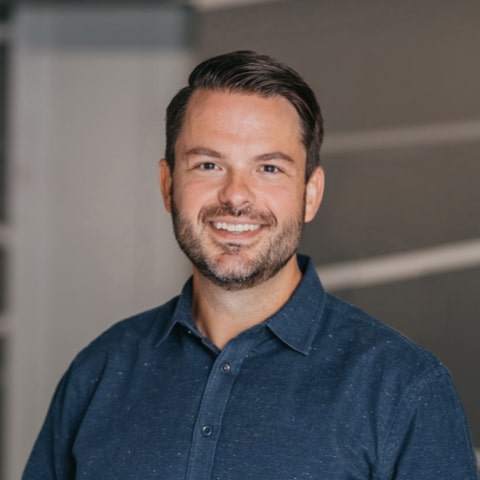
Cory Wheeler
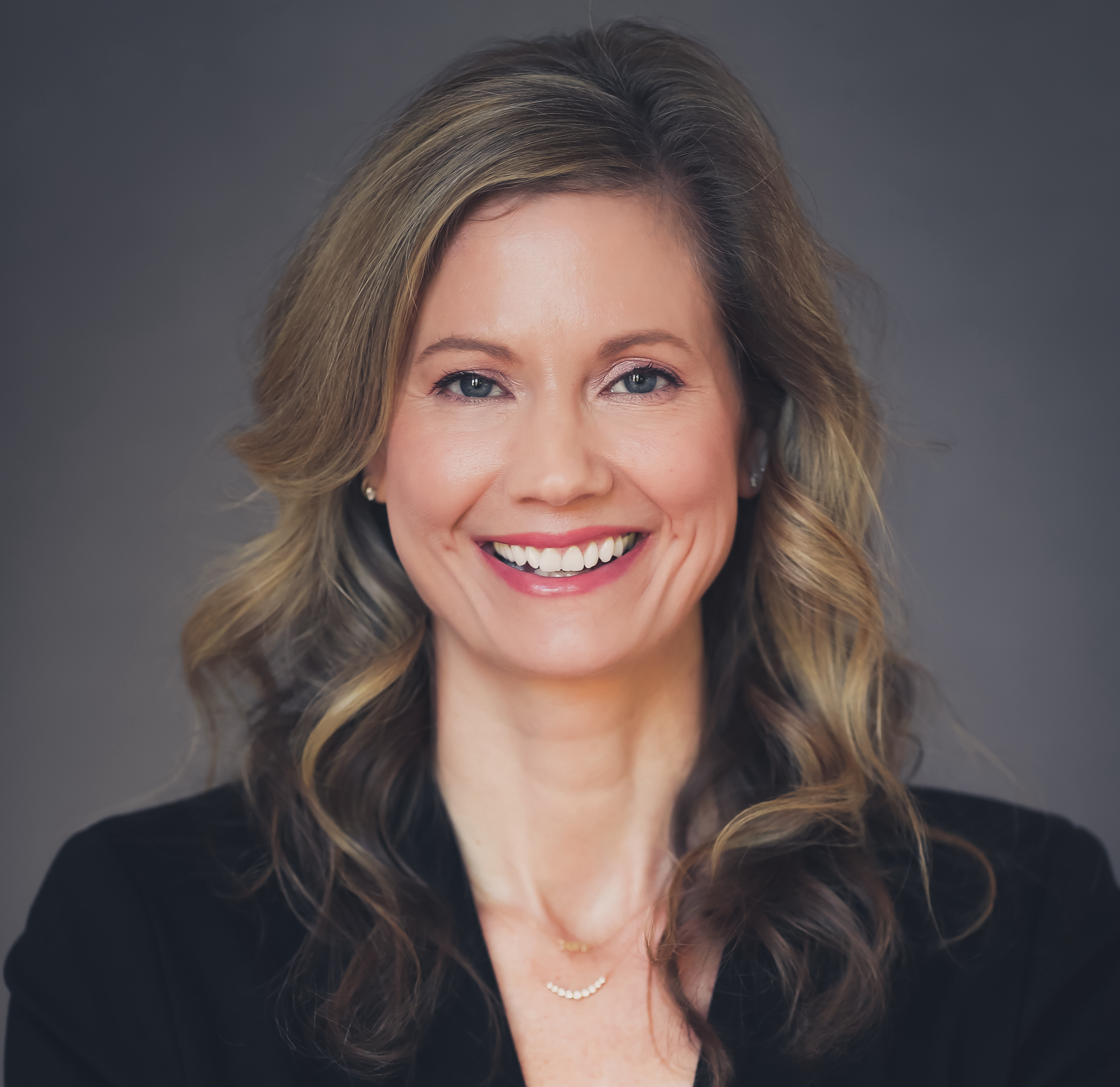
Meredith Albertson
Today's Guests


